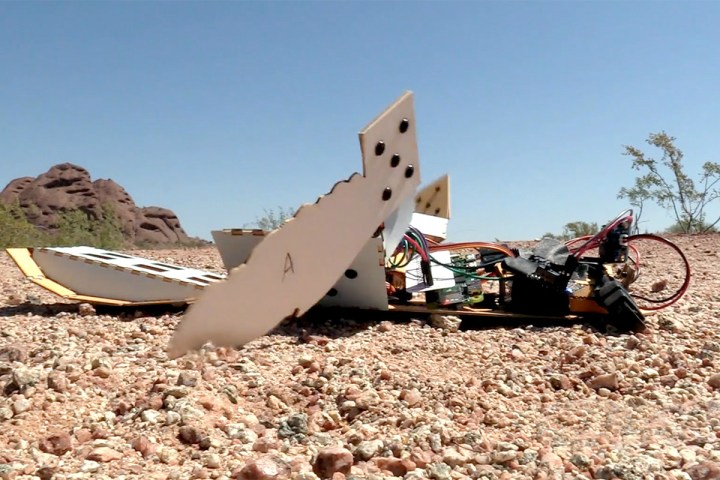
Every year, an estimated 15,000 to 20,000 people are killed or maimed by landmines, according to UNICEF. Militaries around the globe currently use an array of both low- and high-tech approaches to remove them — ranging from rudimentary metal detectors and trained bomb-sniffing dogs, to sophisticated (and wildly expensive) minesweeping droids.
But these newly developed robo-reptiles have many distinct advantages over current land mine removal methods. The robotic turtles are rather small — about “half the size of a drone” according to a report by New Scientist. Each unit is laser-cut from sheets of cardboard and then folded, origami-style, into a shape designed to accommodate a computer chip, motor, and fins. From start to finish, the entire process takes about three hours.
Unlike bomb-sniffing dogs, these robotic turtles have the ability to work independently in the field. Seeing as the current prototypes are intended for use all over the globe, researchers are programming them with algorithms that allow them to react and adjust to different environment. While a specific type of motion may be preferential in one desert, another region with varying sand grains and/or wet terrain might require a different approach.
The meticulous work of pinpointing landmines in the field in painstaking work with zero margin for error and dire consequences if things go awry. That said, these robot turtles cost roughly $80 each, so losing one unit in the field isn’t going to break the bank.
Joint leader of the ASU team behind the project, Heni Ben Amor, envisions a future in which a fleet of nearly 100 robotic turtles could comb the desert for mines and then tag each device for extraction. Amor will present his research at a pair of robotic conferences in July.


